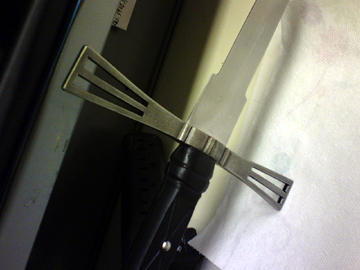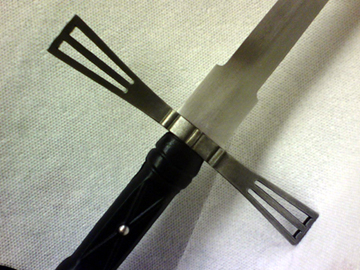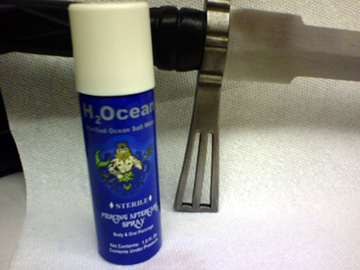--Degrease part to be patinated.
--Prep with green Scotchbrite-pad-the mixture tends to bead and roll off unless it has something with ďtoothĒ to catch it.
--Apply H2Ocean liberally to paper towel wrapped around fingertip (or Q-tip for those hard to reach areas) and wipe across part in either a swirling or straight across motion (alternate for best results). If it spots, keep wiping until the spots blend in. After a few applications, the mixture will stay even and wet longer and evaporate uniformly. (Itís best to practice on a piece of scrap steel first).
--Let dry and repeat until the desired depth is achieved. You may have to do this a dozen or more times, but thatís the beauty of the product-the reaction per application is very light and so itís easy to get the precise depth of color desired. Donít overdo it, however, or it will start to look artificial (Another good reason to test the process on a piece of scrap steel). A good way to see how far youíve come is to look at the part against a white wall as it reflects direct sunlight-the diffusion will give you an accurate impression of the color without excess light causing uneven glare. Other options are to look at it outside on an overcast day, or under fluorescent light with a paper towel as a filter. Wipe off the part with water and degrease again, and youíre done!
Note:The first picture is a before shot-



